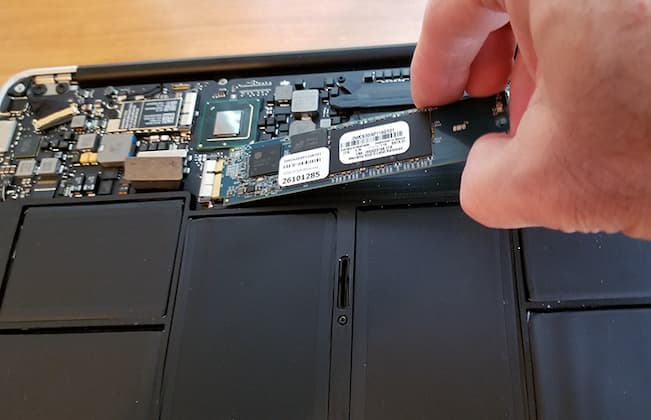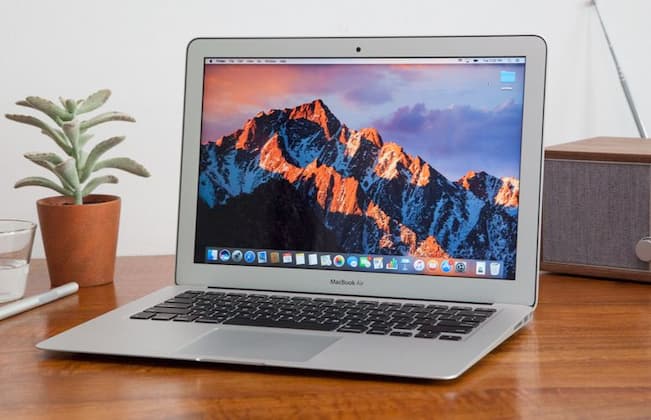You might not know much about computer hardware, but you’ve at least heard about the terms graphics card, processor, RAM, hard disk drive and motherboard. These are the parts that make up a traditional computer or laptop, no matter whether you have a MacBook, a desktop computer or any other type of laptop. All of these parts play a different role in how the computer performs. However, for the average computer user, a graphics card won’t do much, unless they’re into playing the latest video games. The quality of the hard drive, however, will make all the difference in terms of speed.
Modern hard disk drives, as great as they are when compared to their predecessors from only about a decade ago, still don’t deliver optimum performance. For that reason, a lot of people turn to SSDs. SSDs, also known as solid state drives, provide a range of benefits over conventional HDDs. All those benefits can be summarised in a few words – faster, better, more portable. However, in order to get the most out of your SSD, there are a couple of factors you need to keep in mind. While buying an SSD is relatively straightforward, knowing a bit more about them won’t hurt.
How Are SSDs Priced?

Most SSDs range in size anywhere from 128GB to 2TB. While 128GB drivers are the most affordable, they don’t offer nearly enough space as the average user needs. Furthermore, 128GB drives aren’t as fast as higher-end drivers. As a result, many manufacturers have started completely phasing out them. After all, it only costs about $15-20 to get a 256GB drive, and those will be worth every penny. The price between 256GB and 512GB SSDs can be relatively small as well. For most people, a 512GB drive will be more than enough in terms of performance and capacity. As SSDs become more widely available, we’re slowly seeing even 1TB drives fall below the $100 range. 2TB SSDs and larger are quite expensive, and are typically reserved for professional users who require the speed and space that comes with them, and they won’t shy away from paying a premium price of over $400.
The Different Types of SSDs
SSDs nowadays, whether a MacBook Air SSD or those suitable for PCs come in three different types – 2.5inch SATA, AICs or M.2 SSDs.
SATA is the most common type, and they mirror the shape of a traditional laptop hard drive, and you can use the same SATA cables and interface to connect them. If your MacBook Air features a 2-5inch hard drive bay and a spare SATA connector, installing a MacBook Air SSD will be a peace of cake, even for an inexperienced person.

AIC SSDs, on the other hand, while not as popular, are slowly becoming favourites amongst those who are in serious need for computer speed. Instead of a SATA connector, they operate over the PCI Express bus. They’re capable of accessing more PCIe lanes, and all you have to do is plug them onto a slot on the motherboard. Of course, this makes them suitable only for desktop PCs, as you’ll need a PCIe x16 or x4 slot to install them.
Lastly, M.2 SSDs are the shape of a RAM, but a bit smaller. These SSDs have become standard in laptops due to their size. However, you can also find them on desktop motherboards. In fact, high-end motherboards generally come with multiple M.2 slots, allowing you to run the drives in RAID. The majority of M.2 SSDs are 80mm long and 22mm wide. Of course, there are exceptions, and you can tell by the five-digit number in their name. The first two digits refer to the width of the SSD, and the rest show the length. For instance, a traditionally-sized M.2 SSD would be named M.2 Type-2280.
SSD Power Consumption
If you have a desktop and want the best performance possible, then you probably don’t care how much power your parts are consuming. On the other hand, a MacBook Air or any other laptop user wants efficiency more than speed, considering batteries are the most problematic part of running these portable devices.
There are a few SSDs that are known for their extreme efficiency, such as the Samsung 860 EVO. On the other hand, the Samsung 960 EVO is much more powerful, but is power-hungry. So, if you want more unplugged runtime, the 860 EVO should be your choice. The higher in size and power the SSD is, the more power it will draw. While this is true in the majority of cases, some drives can deviate from these trends. Furthermore, technology is constantly advancing, so newer SSDs will almost always be more efficient than older ones, even if they’re larger and more powerful. Regardless, you should make sure your power supply is capable of delivering the necessary power to all the parts connected to your laptop or desktop.
























